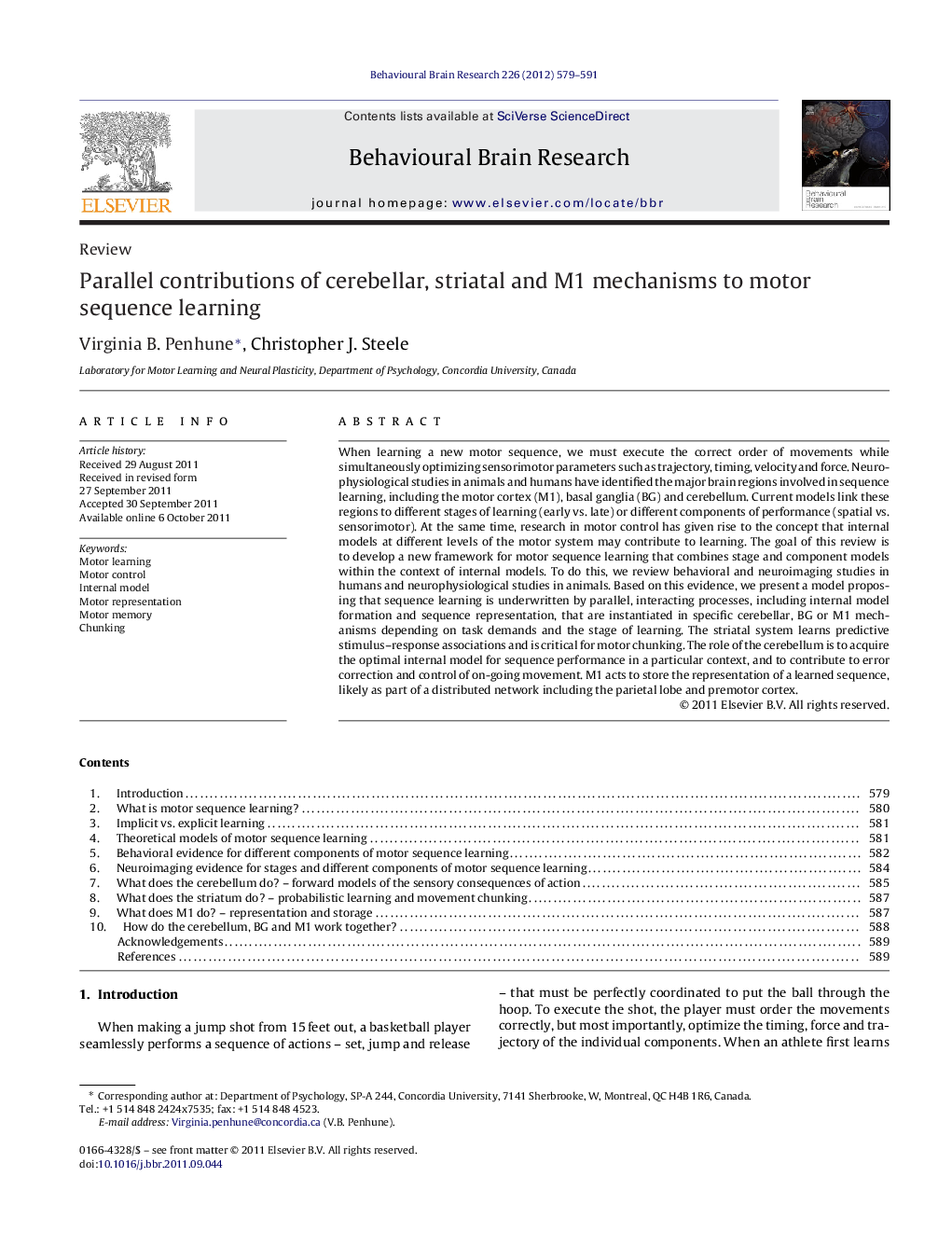| کد مقاله | کد نشریه | سال انتشار | مقاله انگلیسی | نسخه تمام متن |
|---|---|---|---|---|
| 4313631 | 1290002 | 2012 | 13 صفحه PDF | دانلود رایگان |

When learning a new motor sequence, we must execute the correct order of movements while simultaneously optimizing sensorimotor parameters such as trajectory, timing, velocity and force. Neurophysiological studies in animals and humans have identified the major brain regions involved in sequence learning, including the motor cortex (M1), basal ganglia (BG) and cerebellum. Current models link these regions to different stages of learning (early vs. late) or different components of performance (spatial vs. sensorimotor). At the same time, research in motor control has given rise to the concept that internal models at different levels of the motor system may contribute to learning. The goal of this review is to develop a new framework for motor sequence learning that combines stage and component models within the context of internal models. To do this, we review behavioral and neuroimaging studies in humans and neurophysiological studies in animals. Based on this evidence, we present a model proposing that sequence learning is underwritten by parallel, interacting processes, including internal model formation and sequence representation, that are instantiated in specific cerebellar, BG or M1 mechanisms depending on task demands and the stage of learning. The striatal system learns predictive stimulus–response associations and is critical for motor chunking. The role of the cerebellum is to acquire the optimal internal model for sequence performance in a particular context, and to contribute to error correction and control of on-going movement. M1 acts to store the representation of a learned sequence, likely as part of a distributed network including the parietal lobe and premotor cortex.
Figure optionsDownload high-quality image (123 K)Download as PowerPoint slideHighlights
► Review integrates behavioral and neurophysiological data from animals and humans.
► New motor sequence learning model proposes parallel interacting mechanisms in M1, cerebellum and BG.
► BG acquires stimulus–response associations and is critical for motor chunking.
► Cerebellum contributes to error correction and acquires an optimal internal model.
► M1 stores sequence representations along with parietal and premotor cortex.
Journal: Behavioural Brain Research - Volume 226, Issue 2, 15 January 2012, Pages 579–591